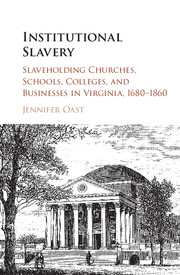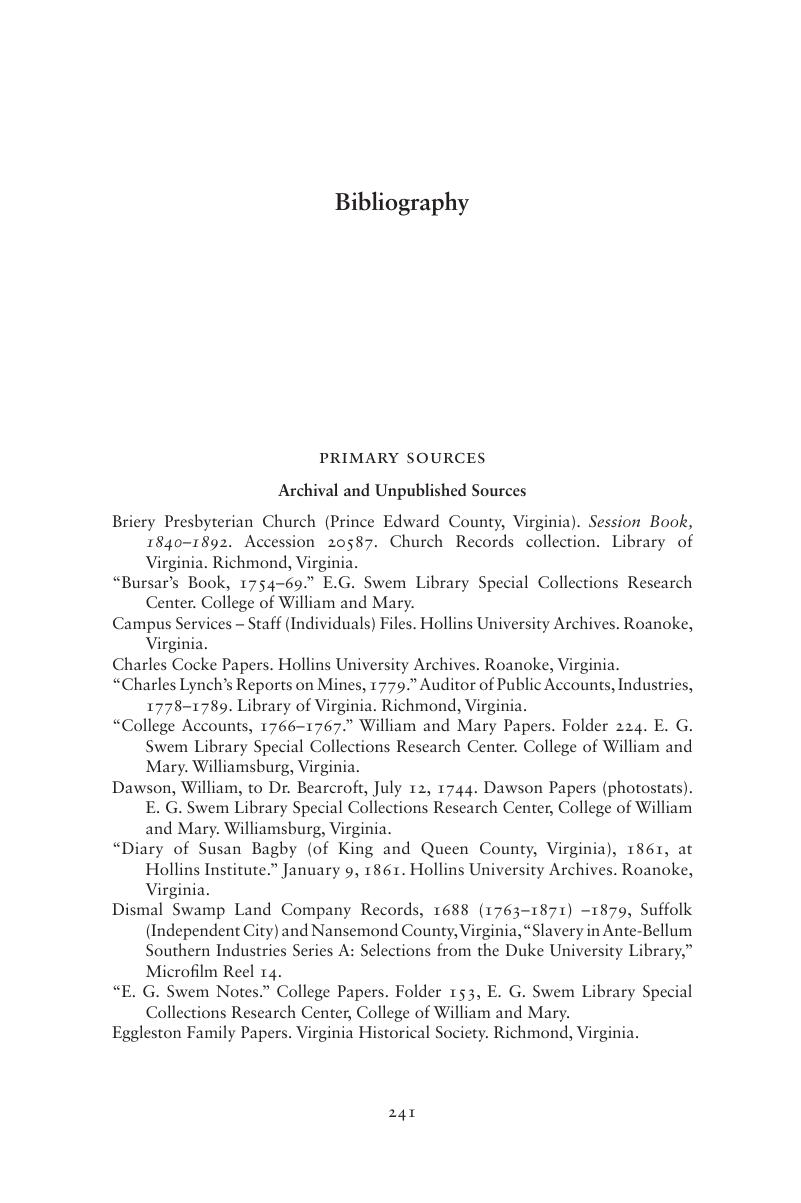 Institutional Slavery
Institutional Slavery Book contents
- Institutional Slavery
- Institutional Slavery
- Copyright page
- Dedication
- Contents
- Book part
- Introduction
- 1 “Unlawful for Any Christian”? Slave-owning Anglican and Episcopal Churches
- 2 “The Legacies of Well Inclin’d Gentlemen”: Slave-owning Free Schools
- 3 “The Worst Kind of Slavery”: Slave-owning Presbyterian Churches
- 4 “So Large a Family as the College”: Slavery at the College of William and Mary
- 5 “Faithful and Valuable”: Slavery at Hampden-Sydney College, the University of Virginia, and the Hollins Institute
- 6 “To Make a Trifle for Themselves”: Industries as Institutional Slaveholders
- Conclusion
- Bibliography
- Index
- References
Bibliography
Published online by Cambridge University Press: 05 December 2015
- Institutional Slavery
- Institutional Slavery
- Copyright page
- Dedication
- Contents
- Book part
- Introduction
- 1 “Unlawful for Any Christian”? Slave-owning Anglican and Episcopal Churches
- 2 “The Legacies of Well Inclin’d Gentlemen”: Slave-owning Free Schools
- 3 “The Worst Kind of Slavery”: Slave-owning Presbyterian Churches
- 4 “So Large a Family as the College”: Slavery at the College of William and Mary
- 5 “Faithful and Valuable”: Slavery at Hampden-Sydney College, the University of Virginia, and the Hollins Institute
- 6 “To Make a Trifle for Themselves”: Industries as Institutional Slaveholders
- Conclusion
- Bibliography
- Index
- References
Summary

- Type
- Chapter
- Information
- Institutional SlaverySlaveholding Churches, Schools, Colleges, and Businesses in Virginia, 1680–1860, pp. 241 - 256Publisher: Cambridge University PressPrint publication year: 2016
